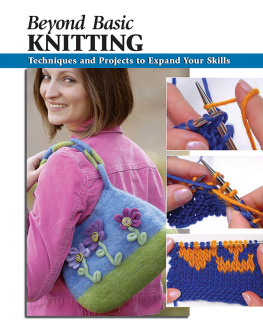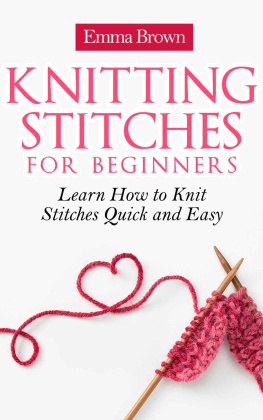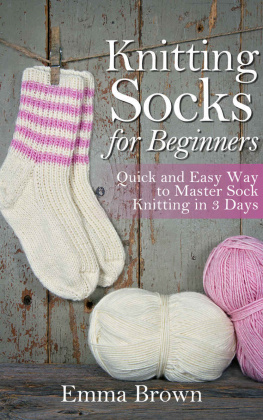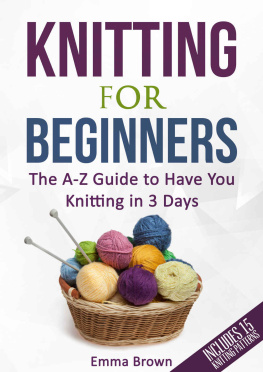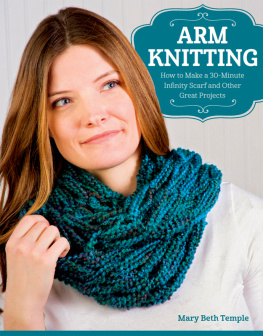
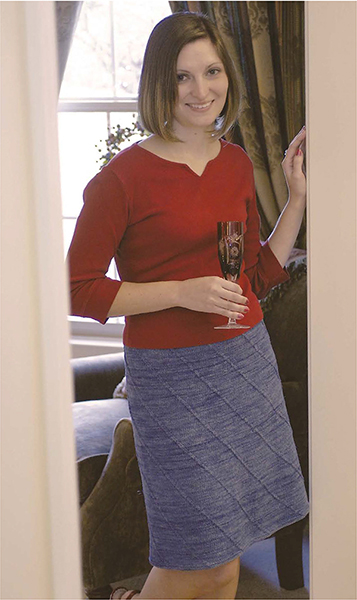
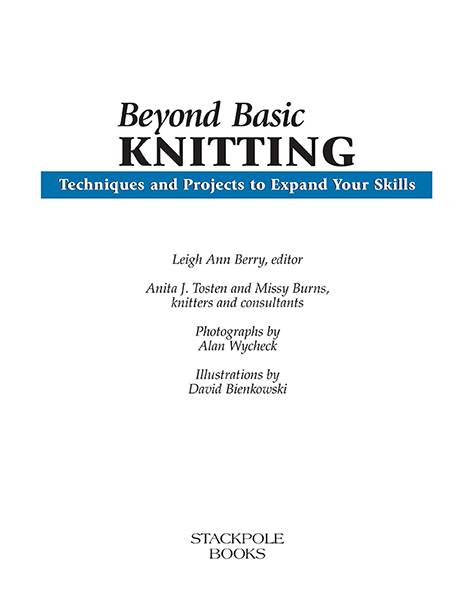
Copyright 2002 by Stackpole Books
Published by
STACKPOLE BOOKS
5067 Ritter Road
Mechanicsburg, PA 17055
www.stackpolebooks.com
All rights reserved, including the right to reproduce this bookor portions thereof in any form or by any means, electronic ormechanical, including photocopying, recording, or by any information storage and retrieval system, without permission inwriting from the publisher. All inquiries should be addressedto Stackpole Books, 5067 Ritter Road, Mechanicsburg, PA17055.
Printed in China
10 9 8 7 6 5 4 3 2 1
First edition
The twice-worked bind off used in the Lantz Corners Shawl() is the creation of Judy Pascale.
The first 30 rounds of the Lantz Corners Shawl are taken fromJames Norburys Traditional Knitting Patterns from Scandinavia,the British Isles, France, Italy and other European Countries (Dover Publications, 1973).
Library of Congress Cataloging-in-Publication Data
Beyond basic knitting : techniques and projects to expandyour skills / Leigh Ann Berry, editor ; Anita J. Tosten andMissy Burns, knitters and consultants ; photographs byAlan Wycheck ; illustrations by David Bienkowski. 1st ed.
p. cm.
ISBN-13: 978-0-8117-3489-9
ISBN-10: 0-8117-3489-7
1. Knitting. I. Berry, Leigh Ann.
TT820.B63 2008
746.43'2dc22
2008005691
eBook ISBN 978-0-8117-5076-9
Acknowledgments
A lot has happened since I rst signed on to do the BeyondBasic Knitting project. Shortly after I agreed to do the book, Ifound out that I was expecting my rst child, Quentin, who wasborn in December 2006. His arrival, while joyous, neverthelesseliminated what little free time I had and made nding time towork on the book project a challenge. To that end, I owe an immense debt of gratitude to my husband, Garrick. It was onlywith his help and support that I was able to complete the project.
I am also deeply grateful to my contributors, Missy Burnsand Anita Tosten, both of whom lent their time and talent to theprojects featured in the book. Anitas creativity is evident in allten of the designs, and her expertise forms the basis of many ofthe tips and Skill Workshops throughout the book. Missysorganizational skill and attention to detail helped to make thelogistics of writing the patterns and delivering the projects runsmoothly. It has been my pleasure and honor to work with themon this second project.
Alan Wychecks talent with the camera is evident on justabout every page of this book. His eye for capturing both theminutiae of close-up skill shots and the styling of the model photos makes him an integral part of Stackpoles Basics series.
My thanks to my fellow series author Sharon Silverman forgenerously sharing her illustrator David Bienkowski with me forthis project. Davids skill at producing a computer-generated version of Alans photographs helped to illustrate several of themore complex skills throughout the book.
Thanks also to Melanie Wagner, Sarah Wycheck and ReganSchnell, who modeled the garments for the book, and to Frankand Terrie Albano, who graciously allowed us to use their beautiful home and property for the photo shoot. My thanks also toTrish McKinney, owner of the Yarn Gallery in Reading, PA, whowas able to help by miraculously producing two skeins of otherwise unobtainable yarn I needed to nish one of the projects.
Finally, my most sincere thanks to Janelle Steen, Mark Allison, and Judith Schnell at Stackpole Books, who have been withme every step of the way with this project. Janelle has masterfully managed the details of the publication process from manuscript to nished book. In the face of unforeseen challenges anddelays, Marks patience and exibility have made my job mucheasier. I am especially grateful to Judith, who, both as an editorand as a friend, continues to be a support to me.
Introduction
Beyond Basic Knitting assumes that the reader has a moderateamount of experience with the craft. Therefore, skills suchas executing the basic knit and purl stitches, checking gauge,joining new yarn, weaving in new stitches, and blocking arementioned, but not explained. For a thorough explanation ofthese skills, please see Basic Knitting: All the Tools and Skills YouNeed to Get Started (Stackpole, 2004).
What you will nd in this book is a brief review of some intermediate skills as well as an introduction to more advancedtechniques that you can add to your repertoire. The true focusof the book is the projects section that will highlight these advanced techniques and show how they are applied in a particular project. The Skill Workshops throughout the book each focuson an individual technique and provide in-depth explanationson how to apply them. The Project in Progress sections take anin-depth look at a particularly complex aspect of a project andguide you through step by step.
The projects in the book are not arranged by level of difficulty, and are independent of one another. You can select whatever type of project suits your fancy without worrying aboutmissing any of the skills in previous projects.
So browse through and see which of the ten projects youwant to try out rst. Then head out to your local yarn shop forsupplies, pick up your needles, and get started!
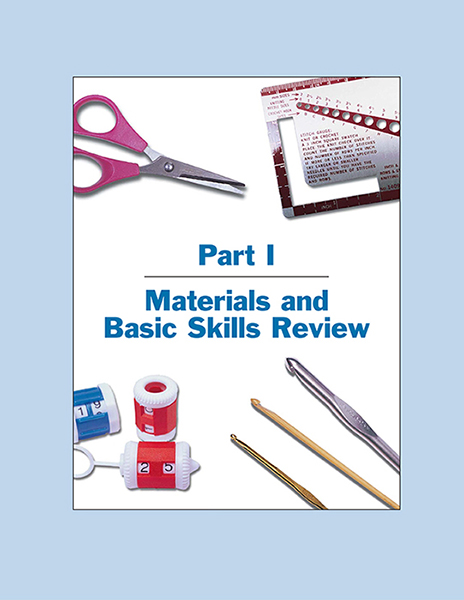
Yarn
WEIGHT
In order to provide a measure of consistency in yarnlabeling, the Craft Yarn Council of America (CYCA) hasissued a set of standards dealing with yarn weight. Theguidelines organize yarn into six main weight categoriesranging from Super Fine (1) up to Super Bulky (6). Inbetween are Fine (2), Light (3), Medium (4), and Bulky(5). See the appendix on page 114 for more details on this organizational structure.
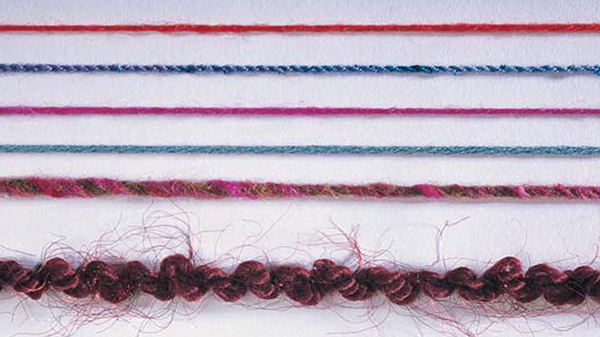
The CYCAs 6 yarn weight categories (from top to bottom):Super Fine, Fine, Light, Medium, Bulky, and Super Bulky.
COMPOSITION AND STRUCTURE
The vast majority of knitting yarn is created by spinning fibers together. Fibers can be natural, such as wool or mohair,silk or cotton; man-made, such as acrylic, nylon or polyester; or a blend of the two. Each fiber has its own distinctivecharacteristics and properties, some of which are desirable and others which are less so. Wool, for example, isextremely warm, but is not as strong as other fibers. Acrylic, on the other hand, is extremely durable, but does notbreathe well. Sometimes a blend of the two materials maximizes the advantages of each. For example, a sock yarnmade of a 92% wool and 8% nylon blend provides the warmth and comfort of natural wool with the added strengthand resilience of synthetic fiber.
The way in which the yarns fibers are spun together determines its structure. There are a variety of differentyarn structures:

Spiral: A thinner yarn twisted around a thicker yarn.

